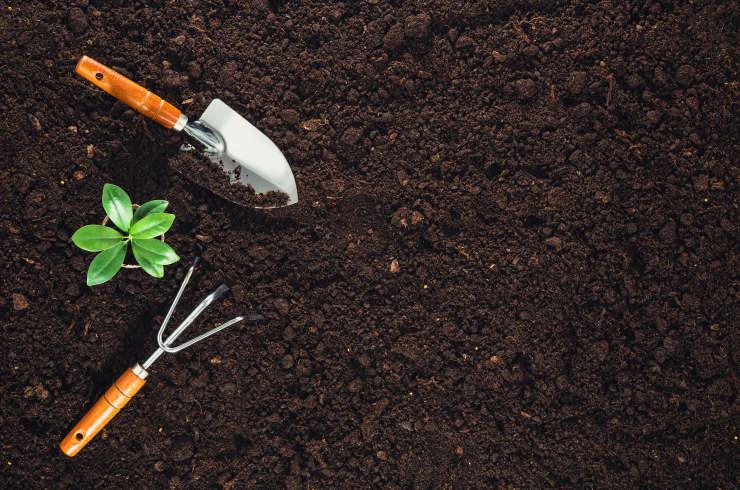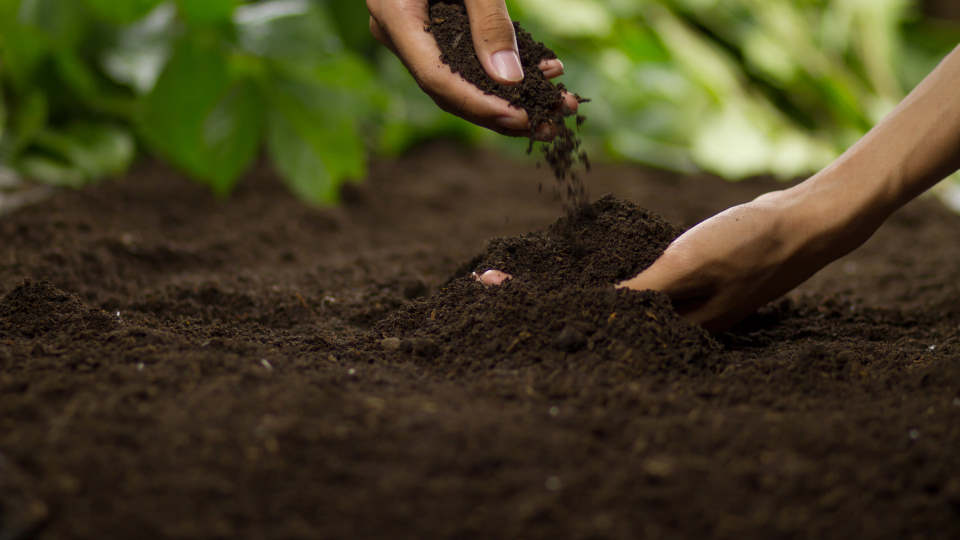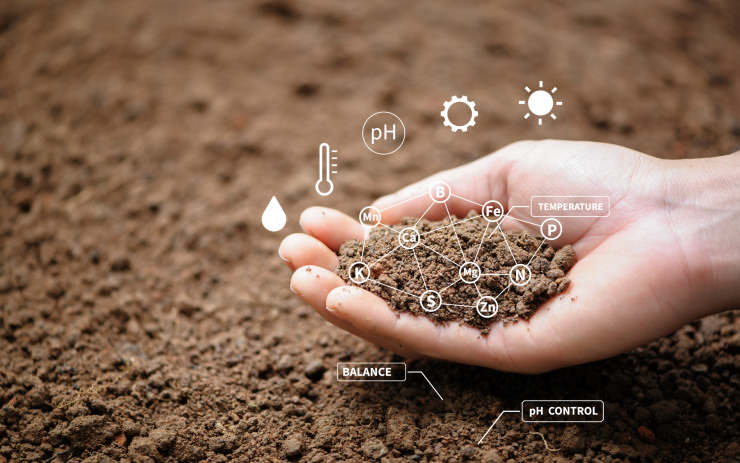Introduction
Many think that the soil in your yard, a bag of potting mix, or an outside garden all amount to more or less the same thing, regardless of whence it was obtained. It is essential to have a solid understanding of the types of soil that will either support the growth of your indoor plants or cause them to perish. In this context, the question “can I use indoor potting mix outside” is asked on the internet.
It is possible to use the potting soil from an indoor plant in an outdoor plant, but it is not a good idea to use outdoor potting soil in an interior plant. With the help of this article, you will have a comprehensive understanding of the subject matter.
You are watching: Can I Use Indoor Potting Mix Outside?
Can Potting Mix Be Used Outside?
This is the time of year when bagged soils are piled high, and we are swamped with options on what to put in our gardens. However, can it also be used in the ground outside? Potting mix is quite common and can be purchased at any time of the year.
Although it is perfect for container gardening, the question remains, which is a crucial topic that a lot of people ask, and they want to know whether they can successfully utilize indoor potting mix outdoors. It is possible to utilize potting mix outdoors in the ground; however, when considering how costly it is and how much of it is required to fill a garden bed, home gardeners often have access to other, more cost-effective solutions.
The basic potting mix components are peat moss (or occasionally coco coir), compost or rotten wood, and perlite. Vermiculite is also often used. Lime or slow-release granular fertilizer could be added to the mix on occasion as well.
All of these components of potting mix are excellent options for various applications inside the garden. Peat moss is great for retaining moisture, perlite and vermiculite are great for aerating the soil, and compost and fertilizer are great for adding nutrients (compost also improves soil structure).
However, to fill a conventional garden bed, you will want a significant quantity of potting mix, which may quickly become expensive. If you can’t get the potting mix for an exceptionally low price, you should just keep it for the container garden or the little raised beds.
You may use potting mix for smaller raised beds, but the cost of doing so will become prohibitively excessive as the size of the raised bed increases. If you are using tall raised beds or steel beds, it is best to fill the bottom with less expensive materials and then add potting mix or compost to the very top.
Can You Use Potting Soil in Outdoor Garden?

It is common knowledge among gardeners that not all soil is made equal. If you have questions like “can I use potting soil in outdoor garden?” you’re not alone. There’s more to it than simply earth shoved into a bag when you buy potting soil. It is a combination of organic elements that have been created expressly to cultivate plants in pots. In addition to sterile soil, there will be a combination of moss, bark, compost, and maybe even a trace amount of sand.
This will be combined with sterile soil. Mica grit, also known as vermiculite, is another component of potting soil that contributes to improving both aeration and drainage. Vermiculite is broken up into pieces that resemble little pebbles and are made of thin layers. It is yet another natural component, and there is no need to be concerned if it makes its way into the soil outside your home.
When used in outdoor garden settings, the use of potting soil does not provide any specific risks or hazards. Instead of potting soil, you should go for dirt when trying to revive a garden bed. The term “dirt in a bag” does not accurately describe topsoil, which is much more like “dirt in a box” and is designed for extensive usage in gardening.
Although potting soil may be a better product, the price of it is much greater than that of regular dirt. If you are moving any indoor plants that already have potting soil in their containers to an outdoor bed, you do not need to be concerned about the little potting soil left in the ball of soil around the roots of the plant. Absolutely won’t have any negative effects on the surrounding ecosystem in any way.
Why Can’t You Use Potting Soil in the Garden?
After answering the question can I use indoor potting mix outside, other important questions need to be answered. Why can’t you use potting soil in the garden is one of these important questions. Creating a new garden spot has the potential to be a really enjoyable experience in its own right.
You may make your yard appear much prettier by planting fresh vegetation and establishing it in the ground. Those who are just beginning their foray into the realm of gardening may lack confidence in their abilities. It’s possible that they won’t know what to do, and in that case, they’ll attempt to figure out what kind of soil will be most suitable for their new garden spaces.
Read more : The 21 Best Outdoor Furniture Covers of 2023
You may already be aware that most people who keep their houseplants in pots use potting soil. Can you use potting soil in the ground when planting things outside?
The maintenance of plants that are grown in containers and pots is going to be quite different from the maintenance of plants that are grown in the ground. Because potting soil was never intended to perform the functions performed by topsoil, you should avoid using it in your garden. Since of this, you shouldn’t use potting soil outdoors because it may be detrimental to the soil in the surrounding region.
Now you have the answer if you were wondering why you shouldn’t do so. Because it drains so efficiently, potting soil in your outdoor garden may make your plants more susceptible to drying out. The natural elements of the outdoors are just not conducive to its use, and it may even have the reverse of the desired impact. It is not a good idea to mix potting soil with topsoil, so if you consider doing so, you should abandon that plan.
If you want the best results from the plants you grow in your garden, it is in your best interest to use normal topsoil. If the soil in your garden is poor, you may need to purchase improved soil, but potting soil is not at all what you need for your garden. You won’t have trouble finding a store that sells huge bags of high-quality topsoil, which you can use to kickstart your garden endeavors. This should be utilized in the garden since there is where you will get the best benefits.
Can I Use Indoor Potting Mix for Vegetables?

If you plan on growing your vegetables in pots, you may use the potting soil you purchased for your flower garden. Of course, utilizing potting soil developed expressly for vegetable plants would be the best possible case. Whether your vegetables are grown in raised beds or pots, potting mixes formulated for use in either would be an excellent option. Let’s look into some other factors you should consider when choosing potting soil for your veggie garden.
To prevent root rot, choose potting soil that drains well and is not too heavy. Damping off, mildews, and other plant diseases may develop if the soil is excessively wet. If the potting soil is light and airy, then you know it has good drainage. You may avoid root compaction by using potting soil with enough air movement.
Your plant’s root systems will thrive in light potting soil since there will be enough oxygen to absorb. And good potting soil will keep your plants from tottering in the breeze. For better aeration, look for perlite or vermiculite among the potting soil components.
The gardener must provide the necessary nutrients to the plants growing in pots and raised beds. Container gardens don’t allow plants to spread out their roots as they would if planted directly in the ground. Because of this, you should not use dirt or garden soil for your vegetable plants, particularly if you are growing them in containers.
Container gardens aren’t a good location to reuse potting soil from a prior season. You might save money on potting soil if you grow veggies. You should be wary of potting soil much cheaper than normal since it may include pests like fungus gnats.
Find out whether you need to apply fertilizer by reading the instructions on the product. Some potting soils come with fertilizer already mixed in. It will tell you how long the nutrients in the potting soil will last on the packaging. On the packaging, you may also discover details on whether or not the soil is certified organic.
What Is Difference Between Potting Mix and Garden Soil?
If you’re planning a new garden, you should start with healthy soil. Because it allows plant roots to spread out and take up water and nutrients, the soil is essentially the medium through which plants live. Garden soil and potting soil are the two most common types sold in bags at the garden center.
Both goods are created from premium organic components. Both products claim to promote robust root development while reducing water use. While both garden soil and potting soil mixes may be used to cultivate plants successfully, they are not equivalent.
Garden soil and potting soil are prepared for distinct uses. Whereas garden soil is added to existing soil, potting soil is used only in containers such as planters and window boxes. Root damage and growth inhibition may result from improper selection, as might excess moisture and soil compaction. Here, we’ll contrast garden soil with potting soil so you may choose the medium that gives your plants the best chance of flourishing.
The topsoil and the composted materials are mixed to make garden soil. Organic matter is combined with natural dirt or sand, making garden soil. Compost from mill operations, composted bark, mushrooms, and cow or chicken manure are all ingredients typically found in garden soil blends. Garden soil’s coarse organic matter boosts water retention in sandy soils and aerates dense clay soils, allowing for healthier root growth.
Read more : Things To Do With Your Baby Outside The House
Depending on the recipe, potting soil may or may not be dirt. Peat moss, compost, and perlite are the standard potting mix ingredients; a soilless mixture used to cultivate plants. Aged pine bark (which acts like compost), vermiculite, coconut coir, and even slow-release fertilizer might round out the mix. Different purposes call for different combinations. Soil for beginning seeds, for instance, can include a larger proportion of lightweight additives like perlite or vermiculite.
Composted manure, worm castings, and kelp meal are common components in organic potting mixes. Some potting mixes are acidic, and if they are, limestone could be added to balance the pH. Due to the difficulty of rewetting dried peat moss and ground pine bark, a watering agent is also added to the mixture to prevent it from drying out. For this reason, the potting mix may effectively substitute natural soil in container gardening.
What Is Difference Between Potting Mix and Potting Soil?

A lot of people get confused between potting mix and soil since they hear the same names. It does not matter whether you are gardening in containers; you still need to create an atmosphere conducive to your plants’ growth.
You have a responsibility to make sure that you have given them enough amount of the necessary nutrients; otherwise, they won’t be able to grow as they should. The growth medium is the most crucial aspect of a plant’s care, and depending on the plant and its needs, you may need to put it in either potting soil or potting mix.
You are not the only person who has contemplated the distinction between soil and potting mix and pondered which is superior for use with plants. There are, however, several important distinctions between the two, which means that whenever you decide between the two, the objective should always be a primary consideration.
The primary distinction between the two is that potting soil is composed almost entirely of earth and only includes minerals and organic matter, while the potting mix is devoid of soil but is abundant in a variety of other materials such as peat moss, perlite, and vermiculite. In addition, potting mix is quite lightweight, in contrast to the weight of potting soil.
A widespread misunderstanding holds that potting soil and mixes are the same, which is not the case. Both in terms of the things they contain and the things they are used for, they are quite different. The consistency of potting mixes is often rather airy and fluffy, and they sometimes do not include any soil at all.
They provide a pathogen-free environment for the plants, which reduces the likelihood that the plants would get ill. In addition, they include components that aid in aeration, drainage, and the retention of water in the soil.
On the other hand, potting soil is fairly heavy and, regrettably, is not sterile. You may, however, locate one that is environmentally friendly and incorporates sand and garden soil if that is what you are looking for. The soil used for potting tends to seal up the plant’s air passages and hold on to more water, both of which may cause the plant to suffocate or develop root rot.
Conclusion
“Can I use indoor potting mix outside” is one of the questions asked by people who want to grow their vegetables and fruits. An answer to this question was sought in this article. While you may use potting soil outside, it’s more expensive than regular soil. Compost, garden soil and topsoil with compost, and other compost combinations like triple mix are all less expensive solutions.
Alternatively, if you have deep raised beds, you may cover the lowest levels with cheaper soil or even woody material like branches and use compost, compost mixes, or potting soil for the upper layers. The search for solutions to a variety of problems was conducted under the umbrella of the inquiry, “can I use indoor potting mix outside.”
The differences between potting mix, potting soil, and garden soil were also expressed. Accordingly, knowing the characteristics of each soil type is a vital issue for the productivity of the plant you will grow.
Miracle-Gro Nature’s Care Potting Mix Review
Is Bifen Safe for Vegetable Gardens?
Schultz Garden Soil Review
Source: https://gardencourte.com
Categories: Outdoor

